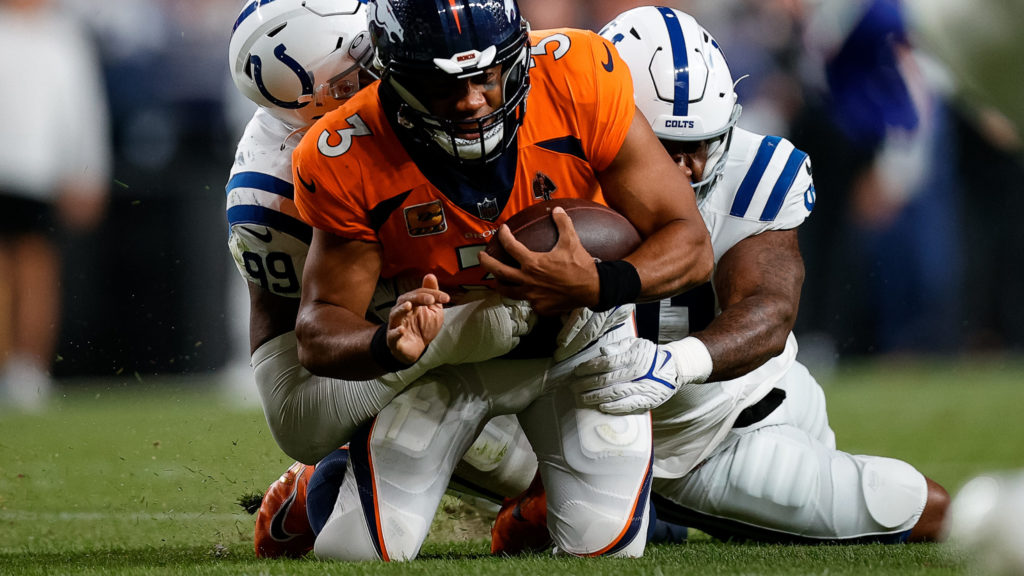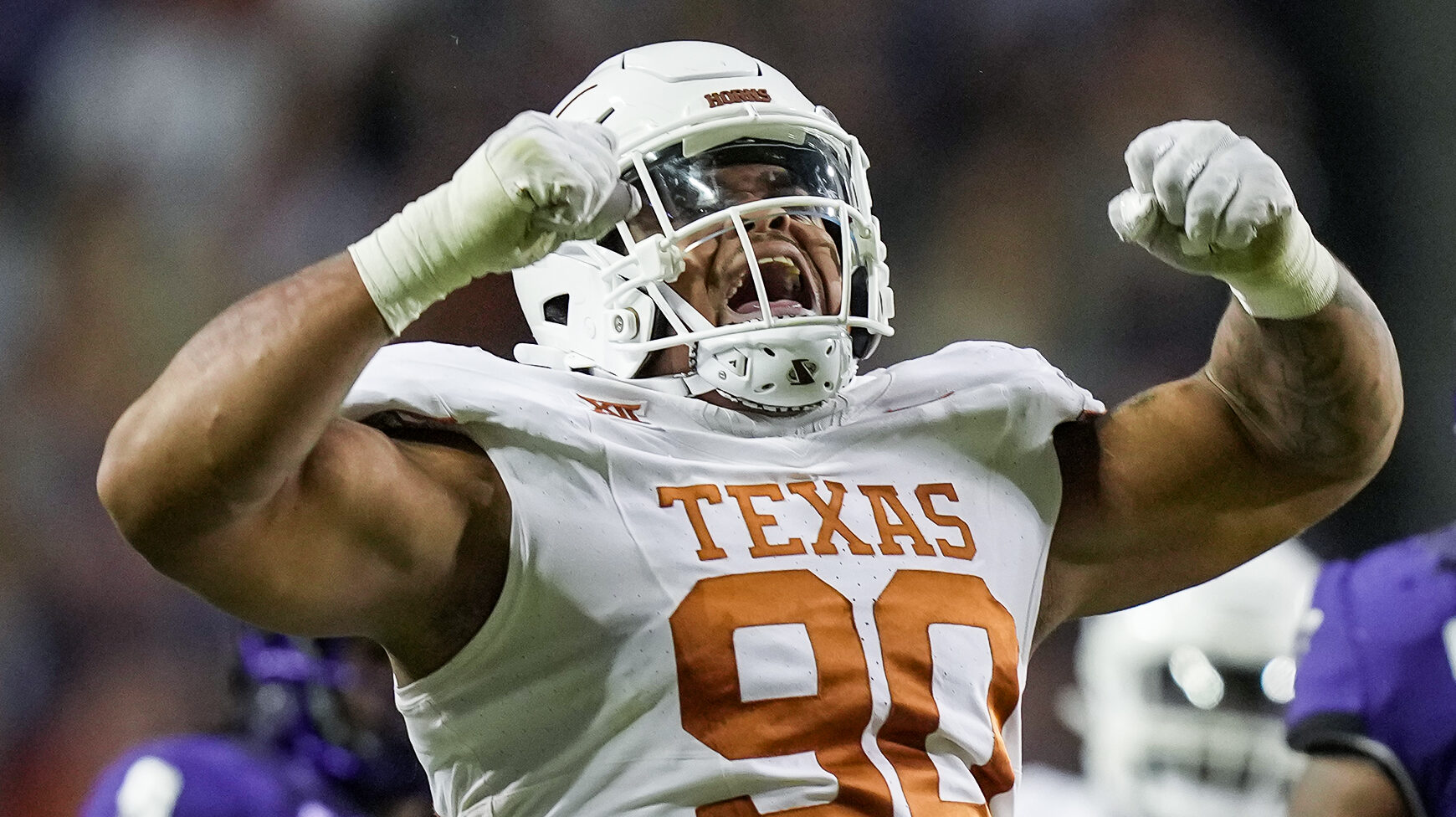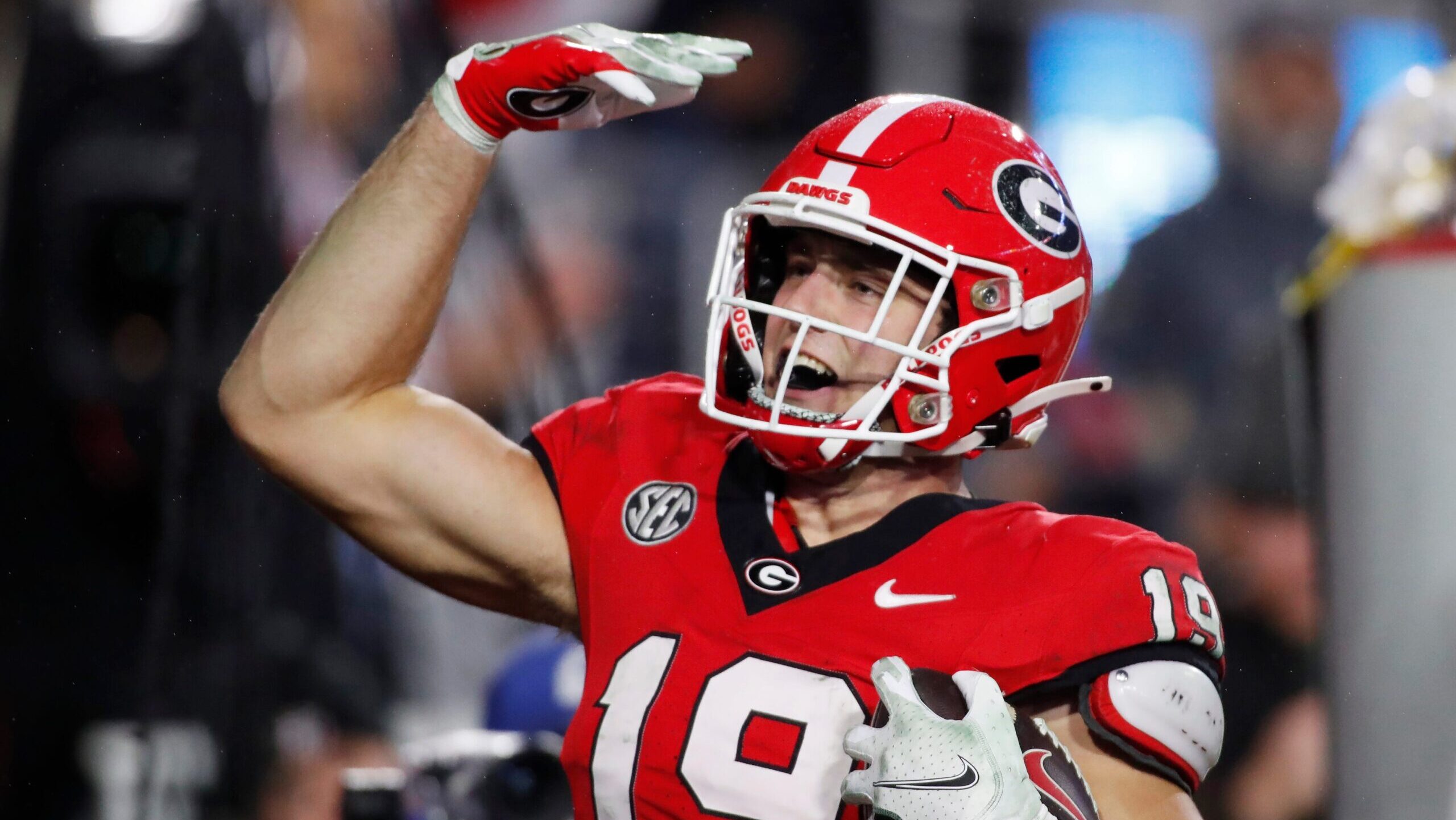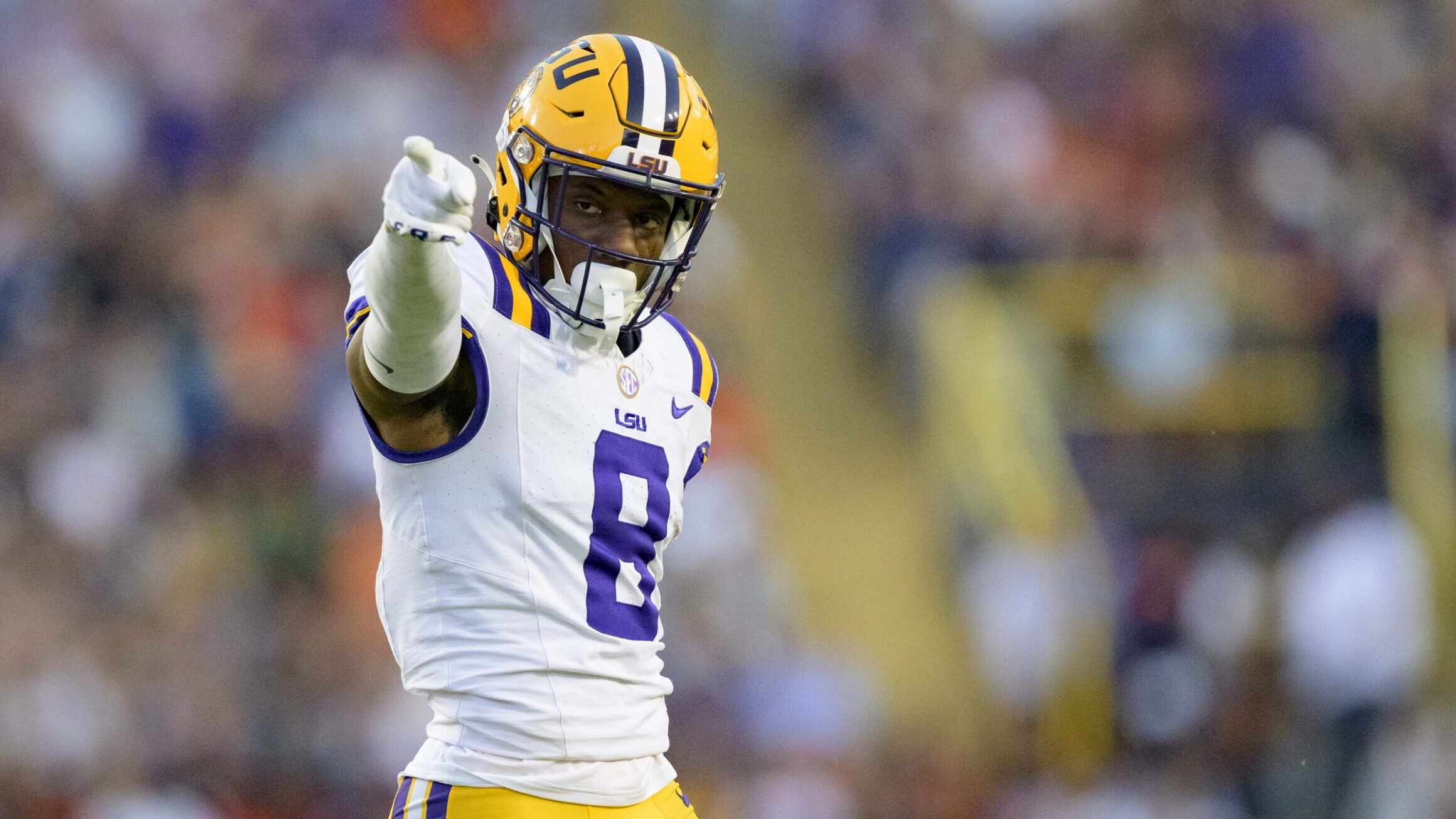Analysis
10/13/22
4 min read
Unlike Cowboys With Dak, Broncos Don't Have Luxury of Waiting on Wilson

Russell Wilson's eagerly anticipated arrival in the Denver Broncos' orange and navy uniform has not gone according to plan. Entering Week 6, the Broncos rank 19th in net yards passing and rushing. Making matters worse, Wilson finds himself on the injury report managing a partially torn latissimus dorsi (lat) on his throwing shoulder.
According to ESPN, Wilson suffered the injury early during the second quarter of the Broncos' Week 4 game against the Raiders on Oct. 2. Four days later, he played again on a short week against the Colts.
The following day, Wilson received a platelet-rich plasma (PRP) injection, and all indications point toward the quarterback starting against the Chargers on Monday night.
Explaining Russell Wilson's Injury
The lat, along with the teres major, are strong muscles that help bring the arm closer to the body. They serve as powerful shoulder internal rotators, extenders, and adductors, making this muscle combination important within a throwing motion.
The lat demonstrates its greatest activation during the arm acceleration and arm deceleration phases within the football throwing motion. The arm acceleration phase is when a quarterback brings the ball forward to release, and the deceleration phase is the follow-through motion after the ball is thrown.
A lat tear is a relatively uncommon occurrence for an overhead thrower. Baseball pitchers are the most common population of athletes to have this type of injury, and even within that group, the overall incidence is low. This low occurrence rate brings an element of unknown to Wilson's injury. Cowboys quarterback Dak Prescott suffered a similar injury before the start of the 2021 season, but we'll compare those two cases more closely later in this piece.
The diagnosis of Wilson's injury is not as straightforward as other shoulder pathologies. An athlete with a lat tear will typically report pain during their throwing motion, accompanied by a loss in velocity or accuracy. Let's examine Wilson's accuracy a bit further.
The two tables below show Wilson's passing attempts, on-target percentage, average throw dept, and pressure percentage on throws with his feet planted (as opposed to shuffling or on the run) before and after his injury. Week 4 is not included, as his injury happened in that game.
Attempts With Feet Planted
| Duration | Attempts | On-Target % | aDoT | Pressure % |
| Weeks 1-3 | 76 | 70.7% | 8.2 | 19.7% |
| Week 5 | 35 | 63.6% | 10.2 | 8.6% |
Attempts of 15+ Air Yards With Feet Planted
| Duration | Attempts | On-Target % | aDoT | Pressure % |
| Weeks 1-3 | 19 | 66.7% | 23.5 | 21.1% |
| Week 5 | 9 | 25% | 28.2 | 19.7% |
Based on the data, Wilson's accuracy appears affected. Keep in mind the small sample size of comparison and the relative difference in throw depth distances. Still, Wilson's accuracy is worth tracking as he continues to play.
The severity of Wilson's injury is unknown. His playing through it suggests it is on the lighter end of the severity spectrum.
Overall, partial-thickness lat tears have an excellent outlook for a return to play without surgery. This prognosis is accompanied by treatment protocols that shut down all throwing activities until an athlete doesn't experience pain or soreness while throwing.
The treatment protocol is directed toward pitchers, but if you remember Prescott's situation, that is the type of protocol the Cowboys followed. Initially, his throwing activity was halted and gradually ramped up along his recovery.
Prescott's injury was before the season began, and the Broncos don't have the luxury of waiting since they are sitting at 2-3 and getting ready to face off against a divisional opponent. Wilson will press on, and Sports Info Solutions will continue to monitor his performance closely.
James Rodriguez, PT, DPT, contributed to this report.
WATCH MORE: Ekeler is Robert Smith's Top Week 5 RB






